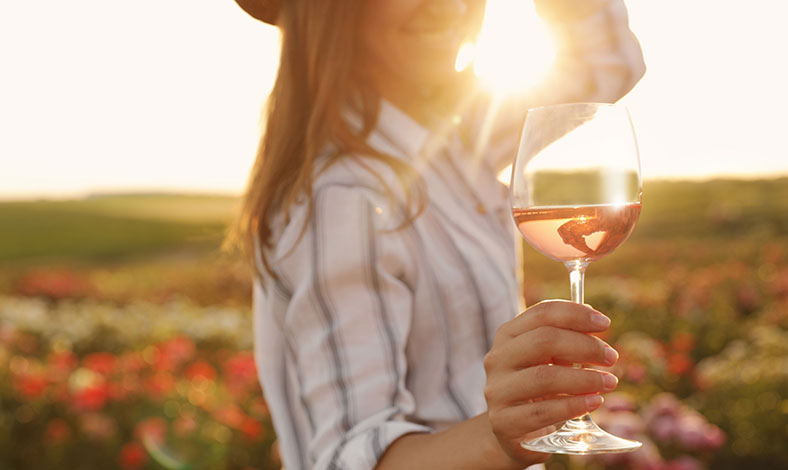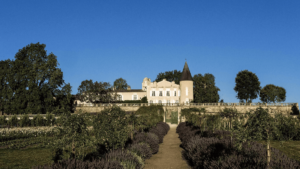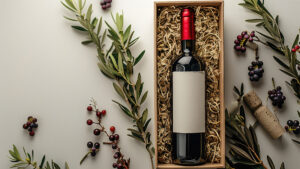
Rosé throws up lots of questions from wine enthusiasts, especially those just starting out. Here we have responses to ten of the most frequently-asked rosé questions with the hope that we can shed some light on a wine that is so often misunderstood! Psst, still not sure where to start, some of our team share their favourite rosés at the end of this article.
1. What are the main rosé families?
You might have already noticed that rosé wines have a whole palette of nuanced shades, going from pale pink to an almost red hue. The difference in colour is largely due to the different vinification techniques which make up these two rosé families: saignée (the bleeding method) and direct pressing.
Saignée (bleeding) has long been considered the most widespread production method for rosé. Black grapes are vinified through maceration in vats, as is done to make red wine. This short maceration gives the wine its colour. This kind of rosé is more apt for ageing.
Direct pressing is becoming popular with an increasing number of domains and consumers. After the harvest, the grapes are pressed so that the maceration is especially short. After the grapes are pressed, the must is incorporated into the juice until the desired colour is achieved. The juice is then vinified quickly, like for a white wine, and fermented at a low temperature. Rosés made in this way are notably lighter, less tannic and fresher than saignée rosés. They don’t have the same capacity for ageing, though, and should be served as an aperitif rather than with a flavourful meal.
Getting super technical now, there is also a third method to make still rosé wine. It uses the Poulsard grape variety which is also known as Ploussard in its native Jura. Mutations of the variety exists that mean the usually black-in-colour grapes appear redder and so we could say that a rosé is made from red grapes instead of the usual black ones. The long time spent in vats (about three weeks) produces a deep-coloured rosé which can be cellared.
No matter which method is used, you’re unlikely to find it written on the bottles so we have to decipher it from the tastes and the colour of the wine.
2. Is rosé made from pink grapes?
Whilst rosé wines often have a lovely pink colour, this doesn’t reflect the colour of the grapes (apart from the case of Poulsard vines from the Jura). In reality, the grapes used for rosé have black skin and white flesh. As is the case for red wine, the grape juice macerates in contact with the skins, and this is what gives the wine its colour. Whilst maceration usually lasts several weeks in the production of red wines, for a rosé, this will often be just half a day!
3. So rosé isn’t a mix of white and red grapes?
As you can see, rosé comes from grapes with white flesh and black skin. However, there is an exception to this rule, which is blended rosé Champagne. This kind of wine is made by blending the must of white grapes and black grapes before adding a small amount of the reserve still red wine. The red wines used for this have to correspond to quite demanding criteria. The best of these come from the terroirs of Ay, Ambonnay, Bouzy and Verzenay.
Just as with still rosés, there are two types of sparkling wines produced. The paler, salmond pink Champagne will be noticed for its aromas, while the rosé de saignée Champagne will be identifiable by its intense pink colour and more vinous notes.
4. Which French regions are the main producers of rosé?
Provence is undeniably the master when it comes to making rosé. 90% of the win made there is rosé. With such a proliferation of these wines, you might think they’re of limited quality or value, but we can show you otherwise with our selection! We recommend exploring appellations like Bellet, Bandol and Palette for rosés that are a bit more intense. Perfect to serve alongside a meal, some even have good cellaring potential!
More powerful in character, rosés from Roussillon are made from Carignan, Syrah and Mourvèdre, and these are also made to be aged somewhat. The neighbouring region of Languedoc is reputed for its complex and aromatic wines, made largely from the same grape varieties seen in Roussillon.
Many of you will have heard of rosé from Tavel. Located in the south of the Rhône Valley, this is the one appellation to produce only rosé. These wines are doted with a certain freshness as well as great aromatic complexity (red fruits, almond, liquorice). Grenache, Cinsault, Mourvèdre and Syrah are grown there, as well as indigenous varieties such as Picpoul noir, Clairette, Grenache Blanc and Carignan Blanc. Their spicy character with a generous palate make of them wonderful gastronomic wines that pair nicely with dishes like tagine.
Rosé Champagne is a particularly interesting wine. Made using two different methods, it is the symbol of celebration and indulgence par excellence. Riceys is an outstanding example of this, a rosé with its very own appellation. Produced in Aube, this rosé is made only of Pinot Noir. This kind of Champagne has no tannin and possesses a remarkable finesse!
Several other regions craft their own versions of rosé. In the Loire, you’ll find the famous rosés and cabernets of Anjou, Clairet in Bordeaux, and Marsannay rosé in Burgundy, Marsannay being the only local appellation allowed to make wines of this colour.
As you can see, each region has its own speciality and puts its own spin on things. Rosé is above all a sign of sharing and coming together. So don’t hesitate to try out a good variety!
5. Does rosé have to be enjoyed young?
As we’ve mentioned, a rosé’s aptitude for ageing depends mainly on how it was produced. Whilst the current trend is more for light, clear rosés to open in the year following their vintage, some are made to be aged in order to develop more aromatic complexity.
Remember that rosé stays in contact with the skins for only a short time during vinification, and it’s the skin that confers colour and tannins, elements that help to preserve it. So this kind of wine is not naturally apt for cellaring.
Generally, rosés made using direct pressing should be enjoyed young, whilst they’re still fruity. Saignée rosés are vinified like red wines to begin with, meaning they are a bit denser and therefore more appropriate to age. These cuvées – recognisable by their deeper colour – are best opened two to three years in the cellar.
6. At what temperature should a rosé be served?
Don’t forget that rosé is a wine – it shouldn’t be served with ice cubes! And each type of rosé requires a slightly different serving temperature:
- A Champagne or sparkling rosé should be served very cool (7°C-8°C) and kept in a bucket of ice.
- A rosé from direct pressing – light, pale, with little structure – should be enjoyed at 10°C.
- Rosés that are more structured and intense should be served at 11°C-12°C.
- Finally, aromatic rosés that are generous on the palate – likely to be served with a meal – should be tasted at around 13°C-14°C, more like a white wine.
7. Is it bad to serve rosé to a wine connoisseur?
Absolutely not! There are plenty of high quality and interesting rosés out there!
At iDealwine, we really believe that the negative stereotypes surrounding rosé need to be challenged. The connotations of a light and summery wine mean that it’s not the sort of special bottle you’ll be opening with your Christmas dinner, for example.
However, as we’ve explained, rosé is vinified in a similar way to both white and sometimes red wines. Some are even good for cellaring and serving with a meal. And even some of the fresher cuvées can have a really interesting aromatic profile, so there’s no need to fear serving up a rosé! Just take a little time to do some research and find one with the character you’re looking for!
8. Can rosé be a gastronomic wine?
Of course! Pairing rosé with a grilled dish is classic and bound to be a success, but this is not the only option!
Generally speaking, lighter rosés will be more delicate in colour, aroma and flavour. They are ideal for accompanying aperitifs (with olive tapenade, fresh cheese, tapas), salads and fish.
Saignée rosés, however, have more body. This means that they can be served with heartier dishes like meat. Some even pair nicely with spicy meals and characterful cheeses.
These stronger cuvées might be the ones to change your mind about rosé. They can easily replace light reds and accompany more elaborate dishes like roasts, meat in sauce, savoury tarts and lasagne. Ageing rosés from Provence, such as the appellations Bandol, Palette and Bellet, fit this kind of profile well.
9. Should rosé only be served in the summer?
We can’t deny that rosé is like a holiday in a glass. Just hearing about it evokes the sound of cicadas and the smell of lavender. However, some of the more powerful rosés could certainly be served during the autumnal season with a hearty meal. It might also be a nice way of building your excitement for the summer or recalling sunnier days. Remember, there isn’t a code to follow here – if it’s what you fancy, don’t let the stereotypes stop you!
10. Is rosé just for women?
Stop right there! Yes, rosé is pink, but aren’t we a bit past that now? Women like reds and whites as just as much, and there’s no reason for men to pass up on a glass of rosé.
Whilst gender doesn’t come into it, it has been found that rosé is more attractive to the 18-24 age group*, and it’s unsurprisingly the French who drink the most of it (35% in 2021), closely followed by the US (14%), Germany (8%), and the UK (6%).
*Study by FranceAgriMer
And our added bonus, the team’s favourites
As promised, here are some of our team’s favourites that you can find on iDealwine.
Elsa, Head of Marketing – France: I like really vinous rosésthat can accompany flavourful food. The Bandols from Château La Bégude will always be a favourite of mine and I like them for their character, freshness and length on the palate.
Steve, Web designer and graphic designer: I have opposite tastes to Elsa, in that I like very pale, light rosés. I have a real soft spot for the rosé produced by Domaine Triennes, which was co-founded by Aubert de Villaine (who also co-owns Domaine de la Romanée Conti) so you know you’re in safe hands.
Paul, Customer service: I really like Corail from Château Roquefort. It encapsulates the typical freshness and lightness of rosés from the Côte de Provence. It’s great to sip with friends, when you can enjoy its fruity side.
Laura, Marketing & Communications Manager for Italy: Flavourful rosé Champagnes that are fresh and fruit are what I go when I want to drink pink. I can recommend the Rosé de Saignée by Francis Boulard to anyone who doesn’t know where to start when choosing pink bubbles.
If you still have some unanswered questions after reading this, you might just find the answer in our other articles so be sure the have a little look. There’s one about pairing ideas for Chinese cuisine, one dedicated to French rosés and a few more.



